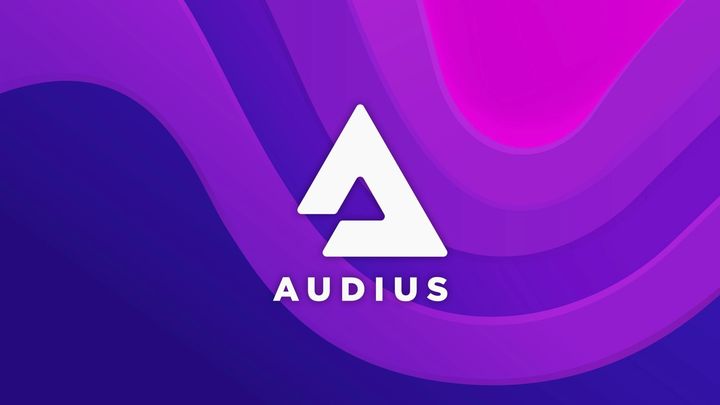Uniswap V3: What's New?
Uniswap V3 added several key improvements over V2, including concentrated liquidity, capital efficiency, active liquidity, multiple fee tiers, advanced oracles, and range orders.

Table of Contents
- What is Uniswap?
- How Big is Uniswap?
- What's New in Uniswap V3?
- Concentrated Liquidity
- Capital Efficiency
- Active Liquidity
- Multiple Fee Tiers
- Advanced Oracles
- Range Orders
- The Future of Uniswap
What is Uniswap?
Uniswap V1 is a decentralized exchange (DEX) that runs on Ethereum and is used for swapping ERC-20 tokens. It launched in 2018. Uniswap V2, which was released in 2020, added the ability to swap token pairs, reduced gas fees, introduced oracles, and added flash swaps. Uniswap V3 was launched on the Ethereum mainnet on May 5, 2021 and included several improvements over V2 that we will discuss later in this article.
How is Uniswap Different from Centralized Exchanges?
Uniswap is different from centralized exchanges (CEXs) like Coinbase or Binance in several ways. One key difference is that Uniswap only supports swapping ERC-20 tokens, while CEXs can trade any coin or token that they support. Another difference is that while CEXs match buyers and sellers in the market, DEXs like Uniswap use liquidity pools. In a liquidity pool, tokens (owned by liquidity providers) are locked up in the protocol to ensure that there are enough tokens available for users to swap.
How Big is Uniswap?
Total Value Locked
Uniswap V3 has one of the highest total value locked (TVL) of any DeFi project, currently ranking 5th with a total of $3.6 billion across all three versions. Specifically, Uniswap V3 has a TVL of $2.65 billion, V2 has a TVL of ~$900 million, and V1 has a TVL of ~$7.7 million.
Decentralized Exchanges
Compared to other DEXs, Uniswap currently has the highest 24 hour (24h) trading volume, significantly surpassing DODO, Curve, Balancer, and PancakeSwap.
Centralized Exchanges
Compared to CEXs, Uniswap currently has a 24h trading volume of $848,134,479, beating many exchanges like ByBit ($508,746,987), KuCoin ($483,136,120), and Kraken ($454,425,911). However, it falls behind Binance ($6,988,413,087) and Coinbase ($2,112,595,930) in terms of 24h normalized trading volume.
On November 14, 2022, Uniswap had more 24h volume on ETH than any CEX.
What's New in Uniswap V3?
There are 6 key improvements in Uniswap V3:
- Concentrated Liquidity
- Capital Efficiency
- Active Liquidity
- Multiple Fee Tiers
- Advanced Oracles
- Range Orders
Concentrated Liquidity
In short, concentrated liquidity allows liquidity providers (LPs) to specify custom price ranges for when their tokens will be used in a swap. It results in significantly higher capital efficiency when compared to automated market makers where liquidity pools do not have specified price ranges (like Uniswap V1 and V2).

Capital Efficiency
Uniswap V3's capital efficiency can generate up to 4,000x more fees compared to Uniswap V2, which means that LPs can make significantly more money in V3 by supplying liquidity to a liquidity range that is in demand. Users also benefit from the deeper liquidity within certain price ranges, which results in decreased slippage.

Active Liquidity
With active liquidity, if the price of assets trading in a specific liquidity pool moves outside of the LP’s specified price range, the LP’s liquidity will no longer earn fees. In this situation, the LP's liquidity will be fully invested in one of the tokens in the pair. LPs can choose to update their price range to reflect the current market price or wait for the market price to reach their range.

Multiple Fee Tiers
Uniswap V3's multiple fee tiers allow liquidity providers to choose between three different fee rates (0.05%, 0.30%, and 1.00%) based on their estimates of the volatility of their token pair. This allows LPs to manage their risk more effectively.
Research from Uniswap found that their V3 fee tiers outperformed comparable positions on V2 (except for the 5bps full-range):
- 100 basis points (bps) fee-tier full-range V3 positions outperform V2 positions by an average of ~80%.
- 1bp fee-tier range-bound V3 stablecoin pair positions outperform V2 positions by an average of ~160%.
- 30bps fee-tier full-range V3 positions outperform V2 positions by an average of ~16%.
- 5bps fee-tier full-range V3 positions underperform V2 by an average of ~68%.
Advanced Oracles
Uniswap oracles are used to provide data, like asset prices, to smart contracts on the Ethereum blockchain. Many other DeFi projects have used Uniswap as an asset price oracle since time-weighted average price (TWAP) oracles were added in Uniswap V2. V3 improved TWAP oracles in several ways, including the ability to calculate any TWAP oracle from the past ~9 days in a single on-chain call. This greatly reduced the cost of using Uniswap's asset price oracle functionality, making it easier and cheaper to use Uniswap for technical analysis indicators like simple moving averages (SMA) and exponential moving averages (EMA).
Range Orders
Range orders are Uniswap V3's equivalent of limit orders. They work by having an LP deposit a single token (rather than a token pair) within a narrow price range above or below the market price. If the market price rises or falls to meet the LP's range order, the asset is swapped for the other asset in the pair. However, unlike a traditional limit order, the LP needs to remove their liquidity to prevent Uniswap from automatically swapping their tokens back into the other asset in the pair if the market price reverses.
The Future of Uniswap
Uniswap Labs doesn't have any plans for Uniswap V4 as of August 2022. Instead, Uniswap Labs is focusing on building tools and products for Uniswap V3.
Value Leaks
According to Dan Robinson, a Uniswap V3 collaborator and researcher at Paradigm, there are three types of value leaks that could be optimized to reduce costs for users and LPs:
- Gas costs
- Slippage/sandwiching
- Loss-vs-rebalancing
If a Uniswap V4 is eventually developed, it will likely try to mitigate value leakage.
Limit Orders
Uniswap V4 could add limit order functionality that is more similar to CEXs. In Uniswap V3, users must simulate a limit order by using range orders, which can hinder user experience.
UNIchain
Dan Elitzer, the co-founder of Nascent, believes that Uniswap Labs will develop a blockchain for Uniswap in the long term. He uses the example of web2 applications like Facebook, which initially want the exposure that comes with being on the Apple and Google app stores. However, over time, they gain enough users that they no longer want to be limited by, and pay fees to, Apple and Google. In the case of Uniswap, this would be Ethereum. From a game theory perspective, it makes sense for Uniswap (or any decentralized application with sufficient users) to want to develop its own blockchain in order to optimize for control and profits.
Sources and Further Reading
- Official Uniswap V3 blog: https://uniswap.org/blog/uniswap-v3
- Uniswap V3 Core Whitepaper: https://uniswap.org/whitepaper-v3.pdf
- Liquidity providing in V2 vs V3 (technical): https://mellowprotocol.medium.com/uniswap-v3-liquidity-providing-101-f1db3822f16d
- https://uniswap.org/blog/launch-uniswap-v3
- https://uniswap.org/blog/uniswap-v3-oracles
- Uniswap V3 code explained by developer: https://youtu.be/WCLsIcjLSXc
- Uniswap V3 smart contract code: https://github.com/Uniswap/v3-core/tree/main/contracts
- Fee returns of V2 vs V3: https://uniswap.org/blog/fee-returns
- Uniswap roadmap: https://support.uniswap.org/hc/en-us/articles/7425482965517-Uniswap-V3-vs-V2
- Dan Elitzer on UNIchain: https://medium.com/nascent-xyz/the-inevitability-of-unichain-bc600c92c5c4
Notable Tweets
Uniswap has more volume on ETH than any centralized exchange last 24 hours?
— Alex Svanevik 🐧 (@ASvanevik) November 14, 2022
Only one above $1B. pic.twitter.com/JEXncWlDLw
5/
— Uniswap Labs 🦄 (@Uniswap) March 23, 2021
💸 Concentrated Liquidity means LPs can earn the same amount of fees with just a fraction of the underlying capital, while keeping more of their total portfolio in desired assets!
🔥 Capital efficiency gains max out at 4000x for LPs adding liquidity to a 0.10% price range pic.twitter.com/aLUvBmbPGp
3/ Our research found that for full-range positions, v3 fee returns:
— Uniswap Labs 🦄 (@Uniswap) June 6, 2022
☝️ Outperform v2 by 160% for 1-bp fee-tier range-bound stablecoin pairs
💯 Outperform v2 by 80% for 100-bp fee-tiers
🤑 Outperform v2 by 16% for 30-bp fee-tiers
👇 Underperform v2 by 68% for 5-bp fee-tiers
Uniswap v3 has reduced MEV more than people realize. More capital efficiency means:
— @bertcmiller ⚡️🤖 (@bertcmiller) June 15, 2021
- Users can set tighter slippage -> less room for 🥪 bots
- It takes more $ to move the price -> higher upfront capital for front running -> price out a bunch of 🥪bots
DEXes leak value to miners through three kinds of MEV:
— Dan Robinson (@danrobinson) December 14, 2022
1. Gas costs
2. Slippage/sandwiching
3. Loss-vs-rebalancing
Reduce any of these leaks, and you preserve more value for swappers and LPs.
So each of these categories corresponds to a promising line of DEX research.



Comments ()